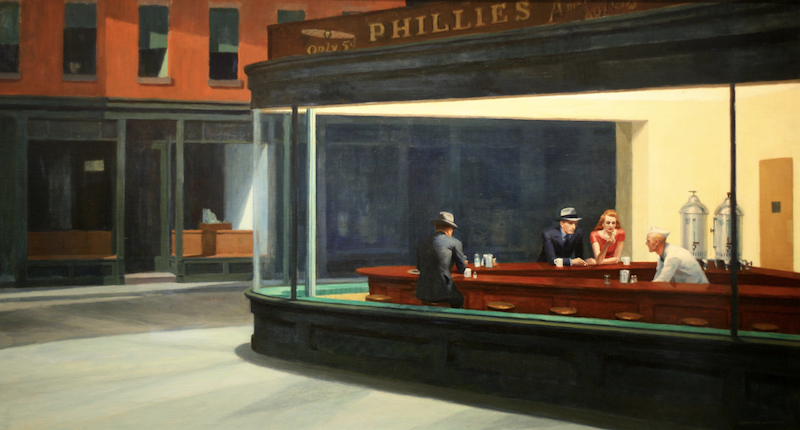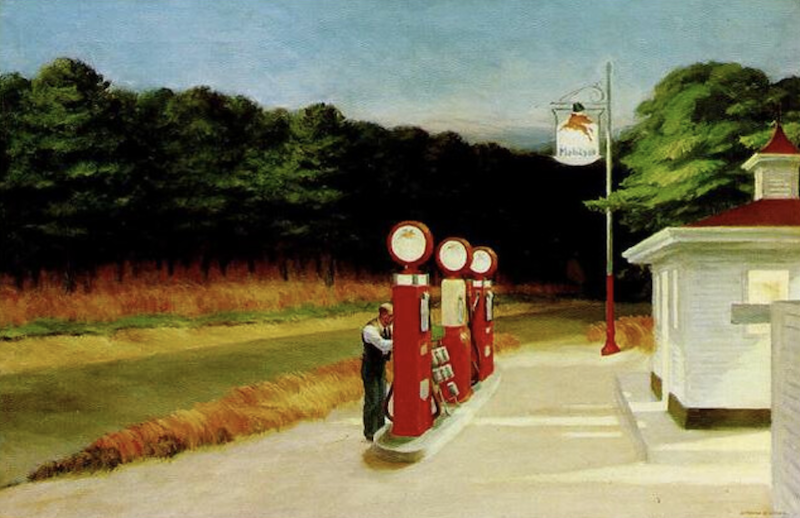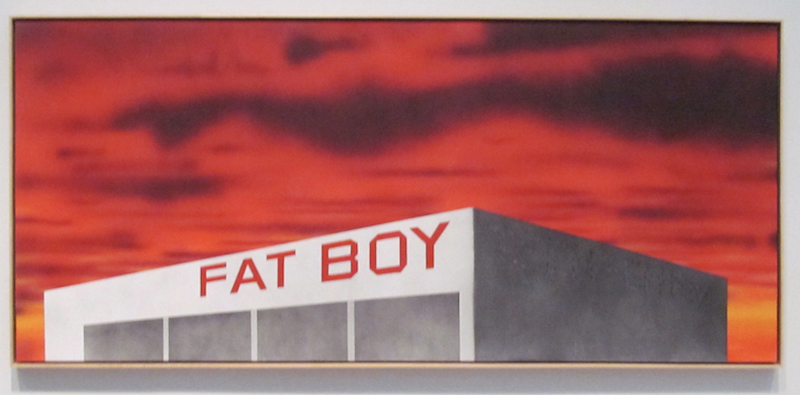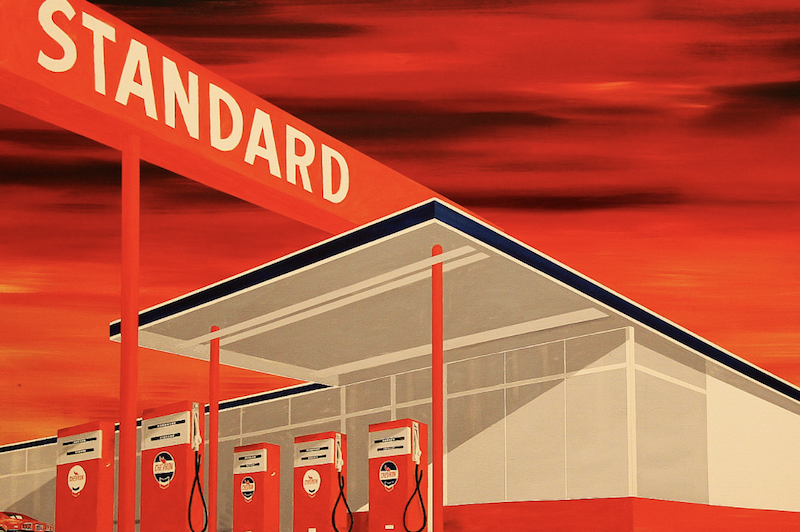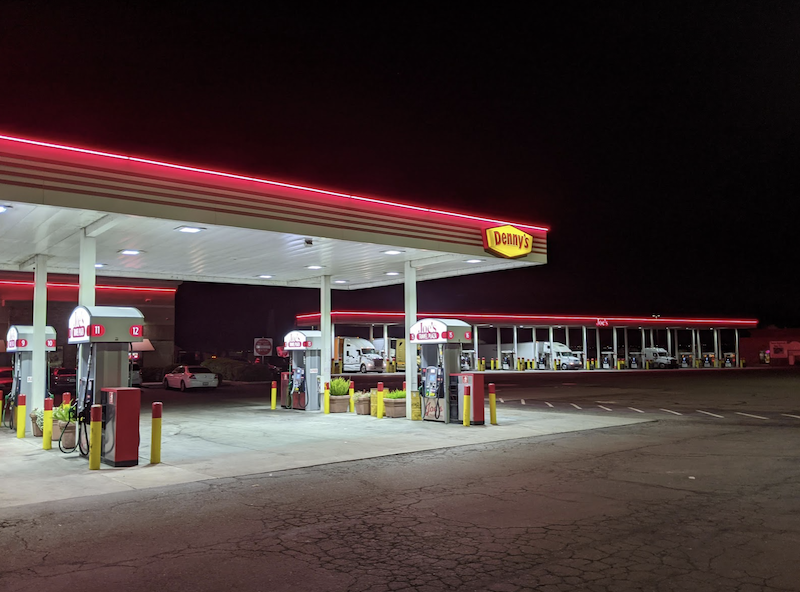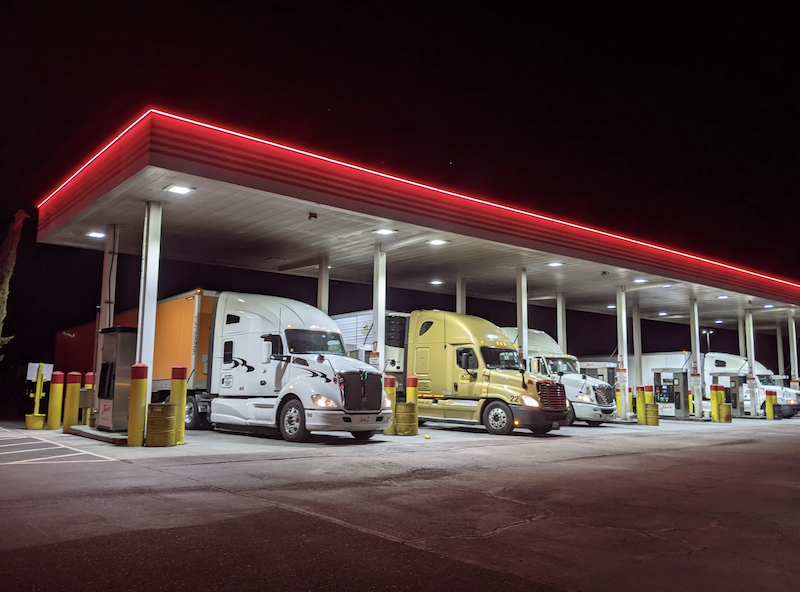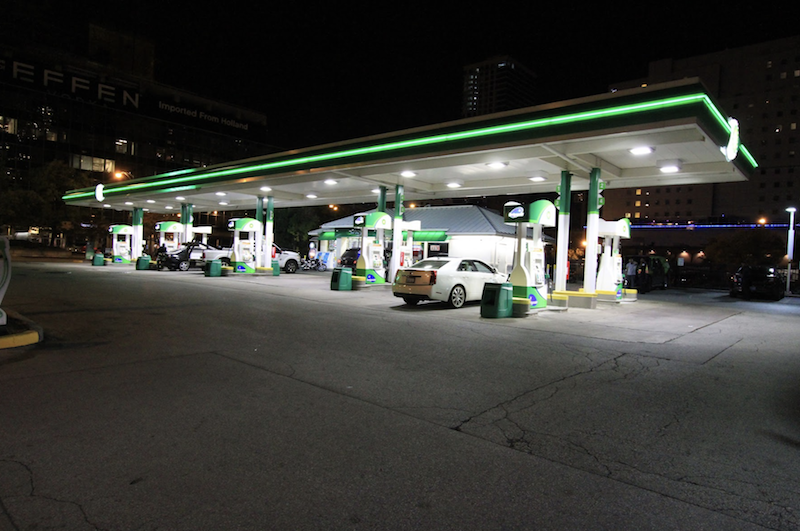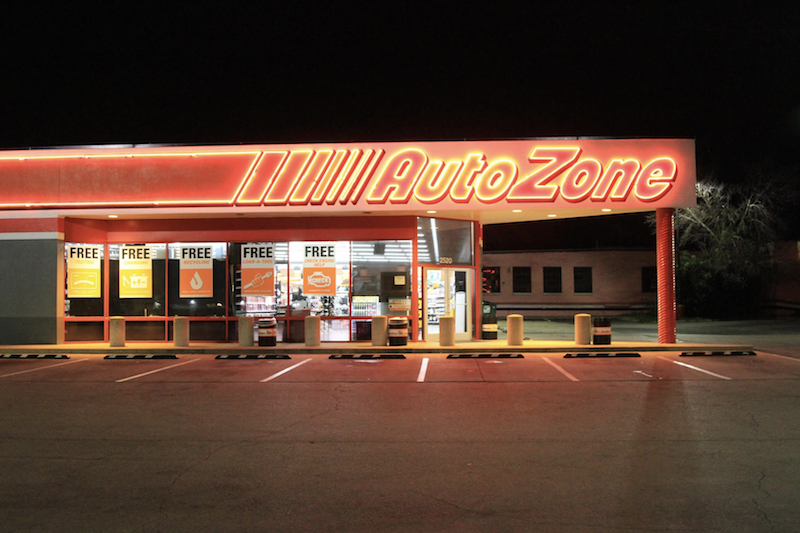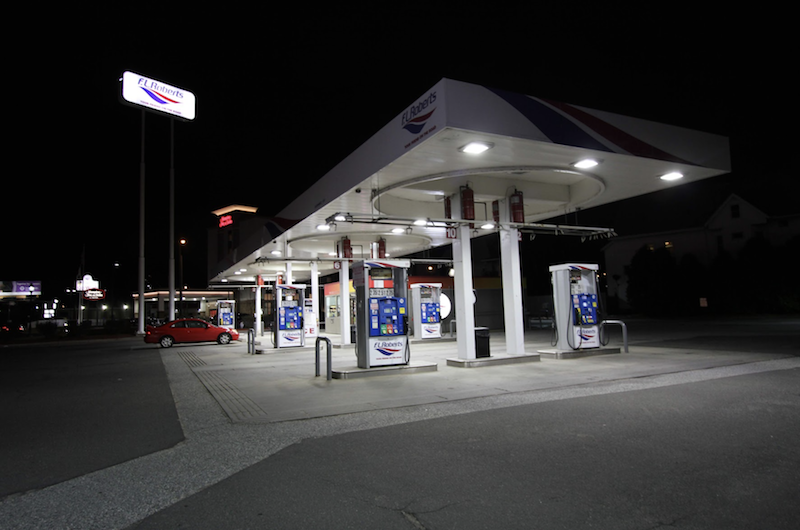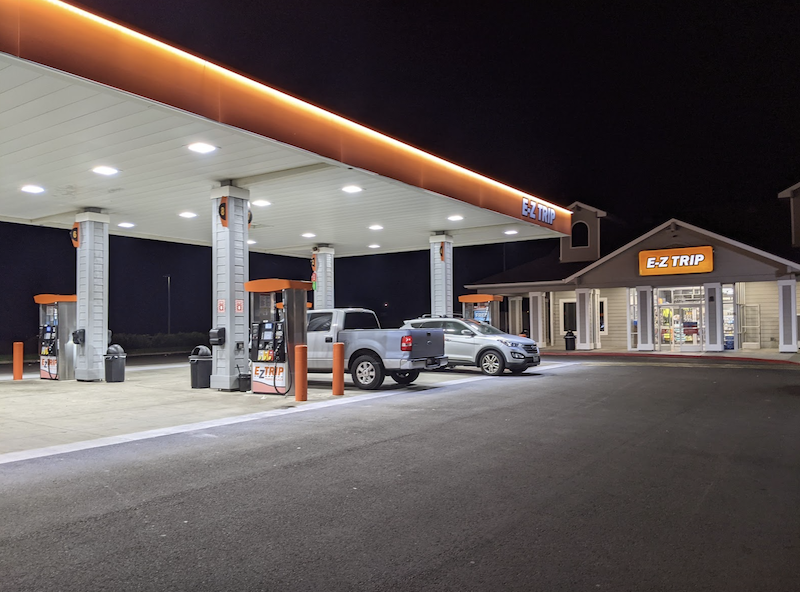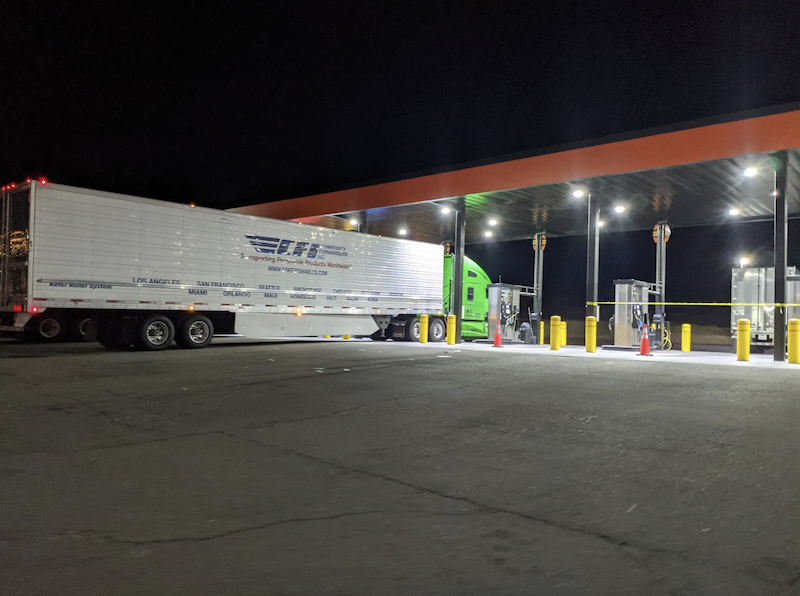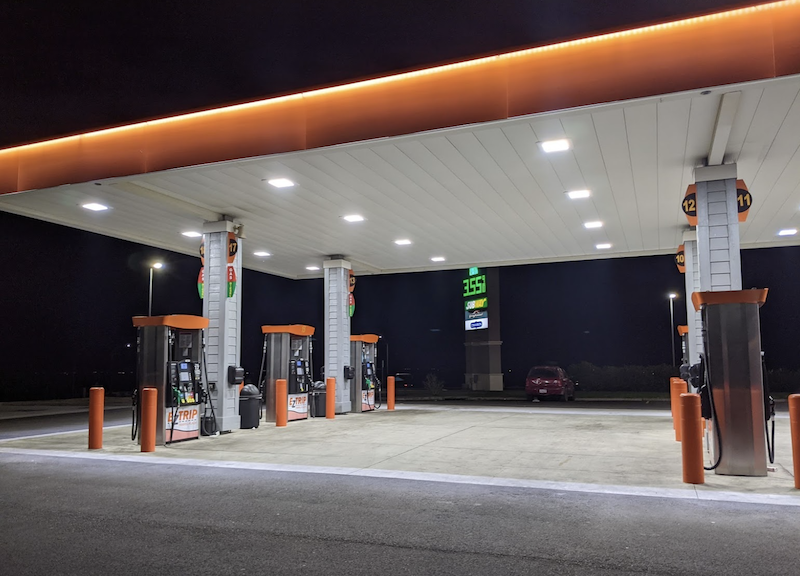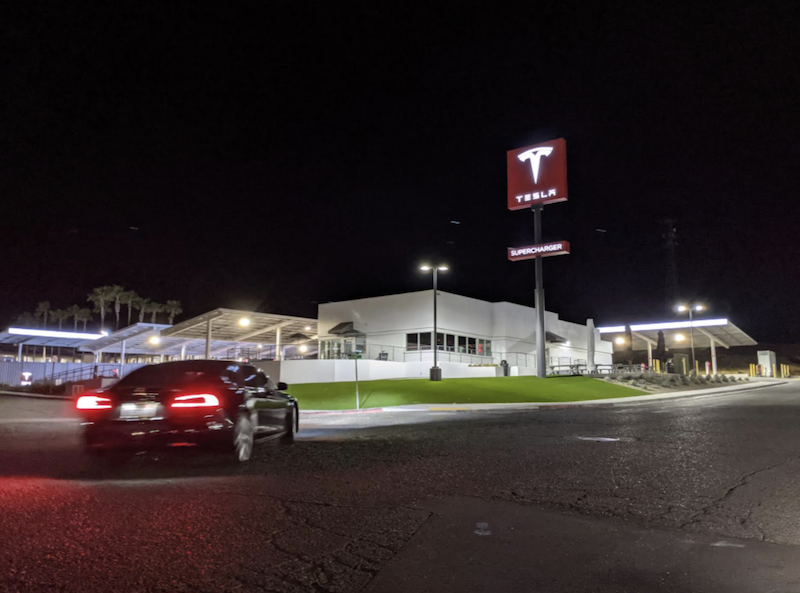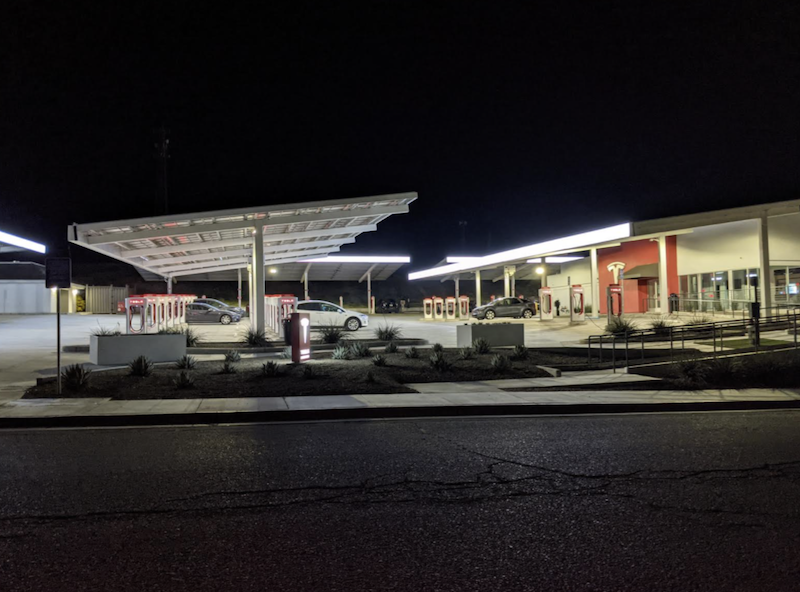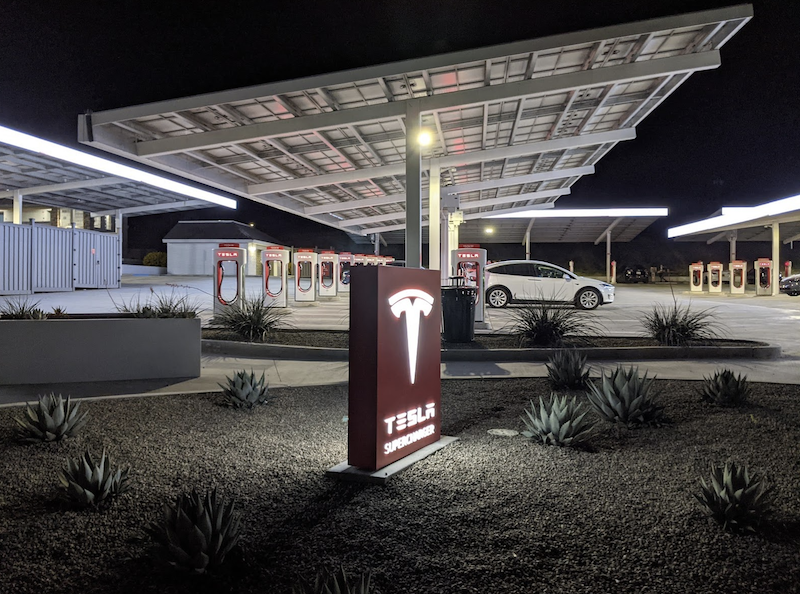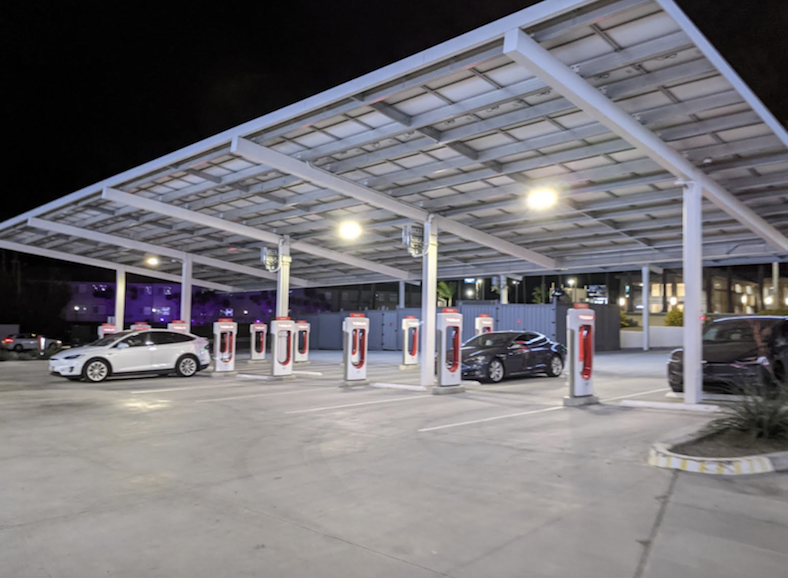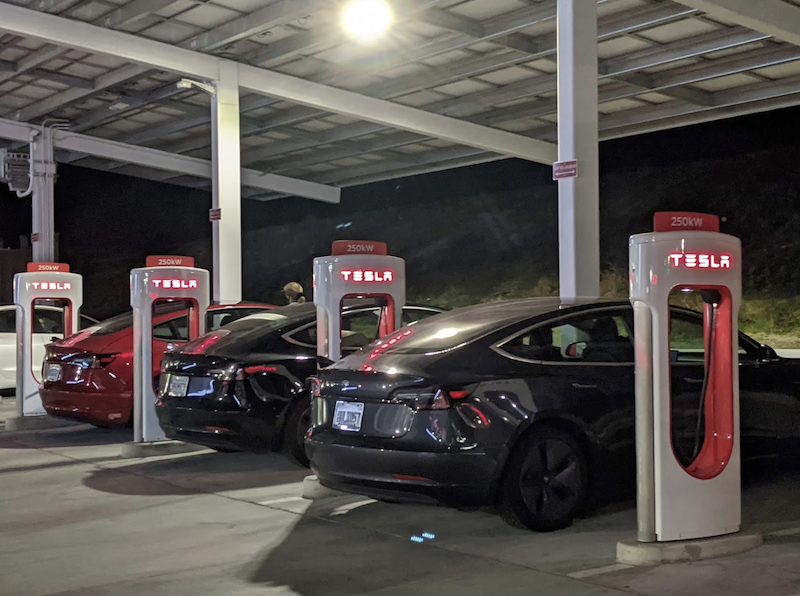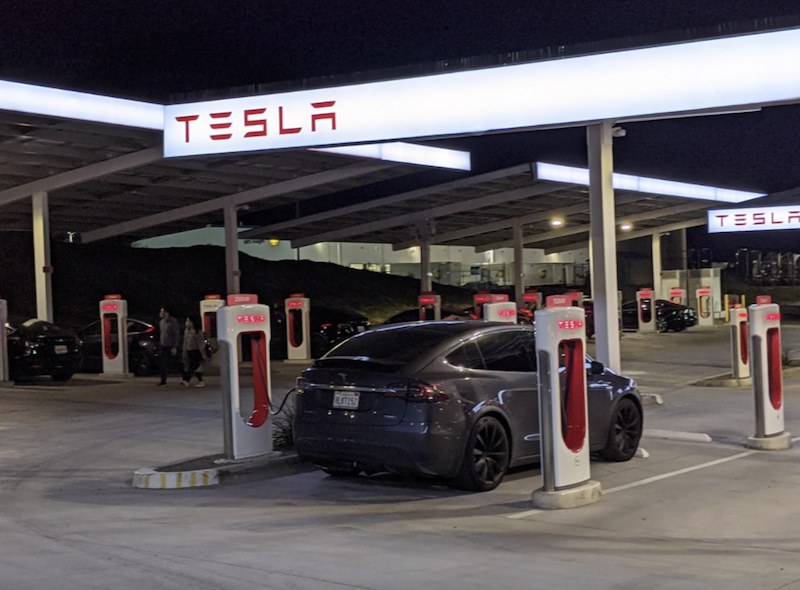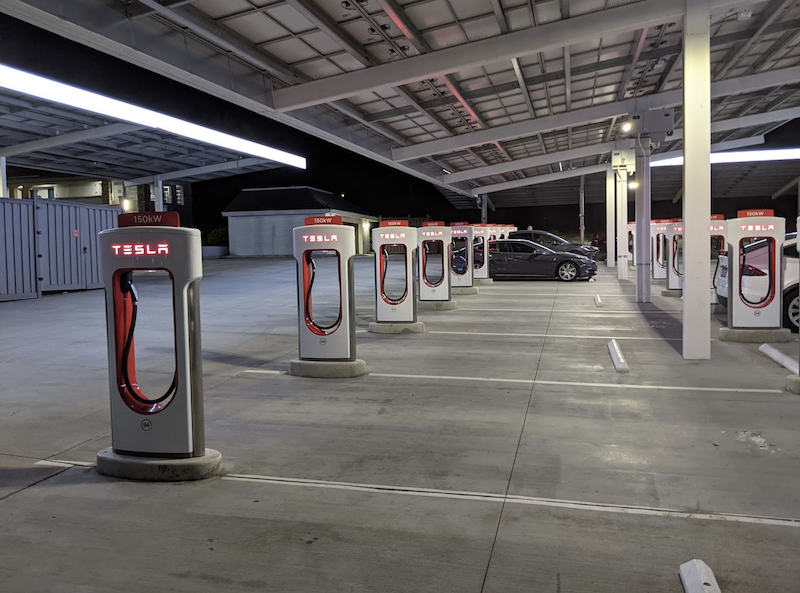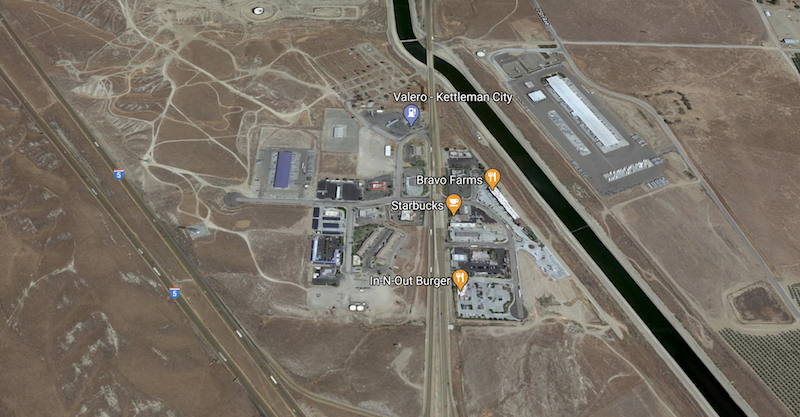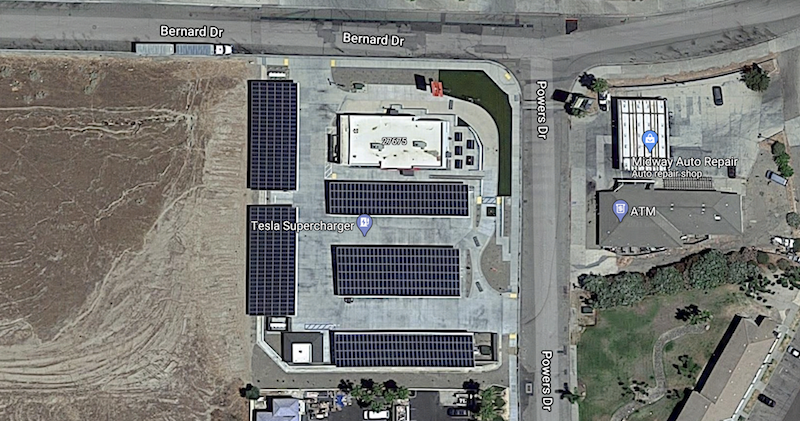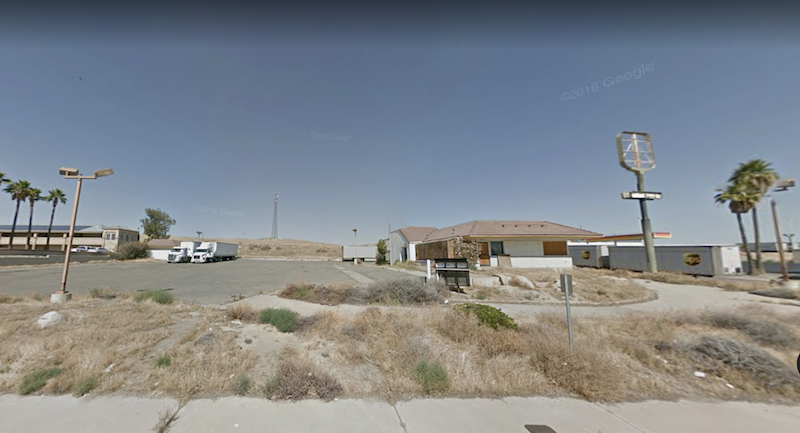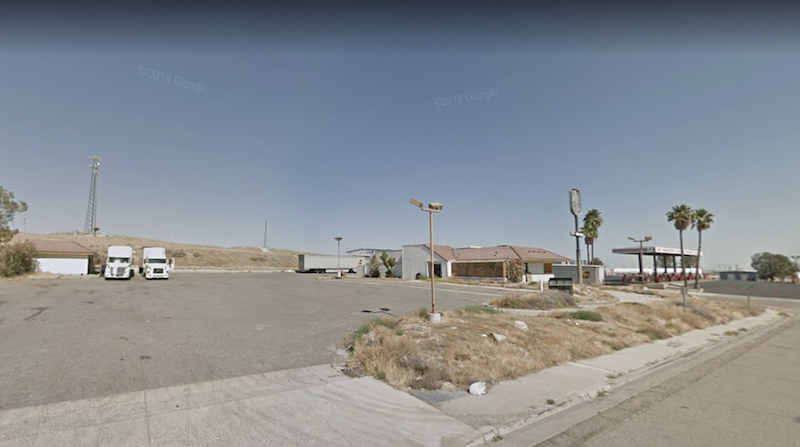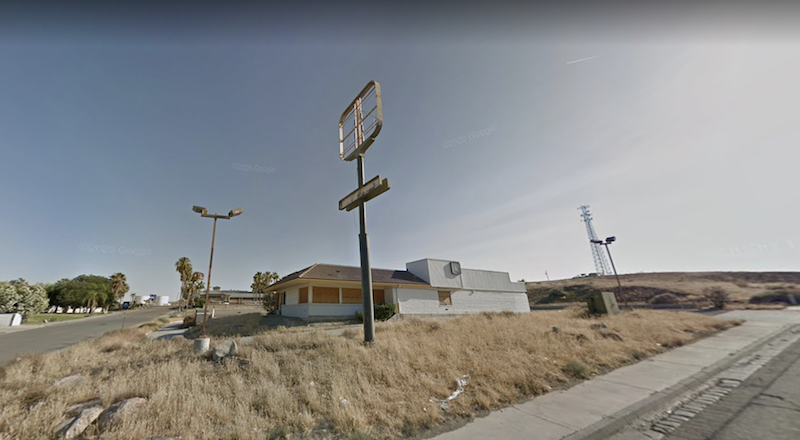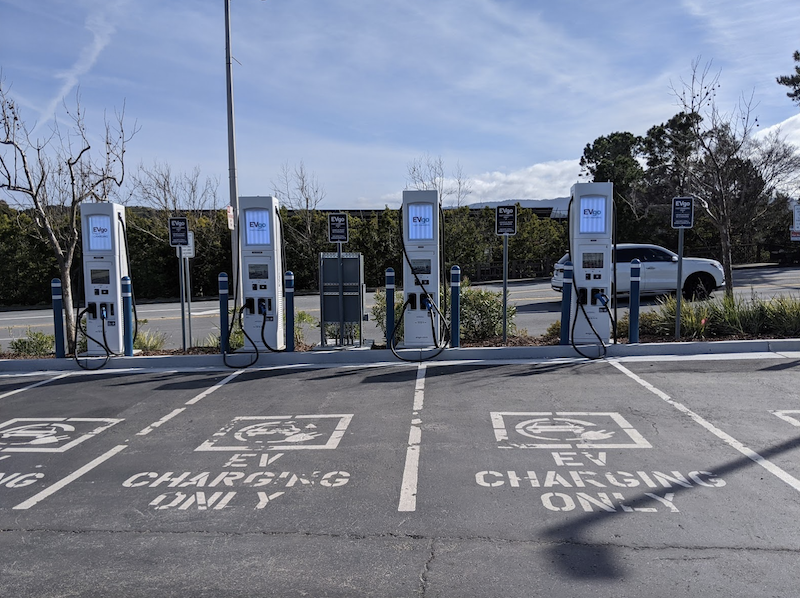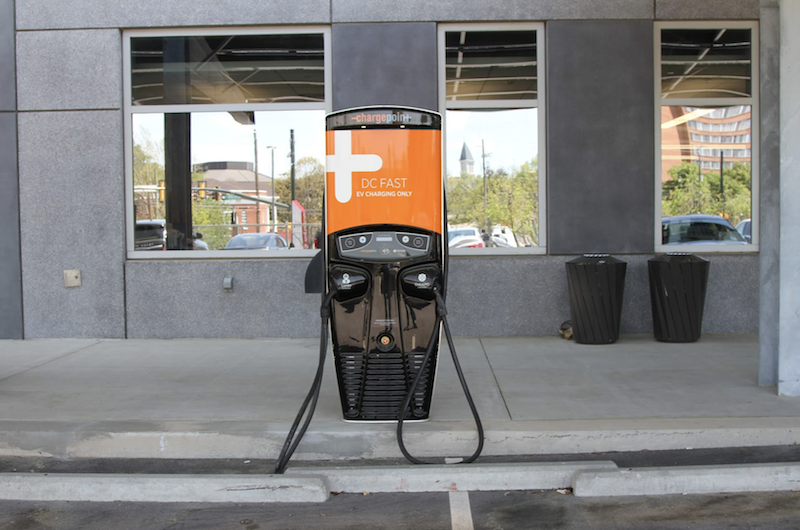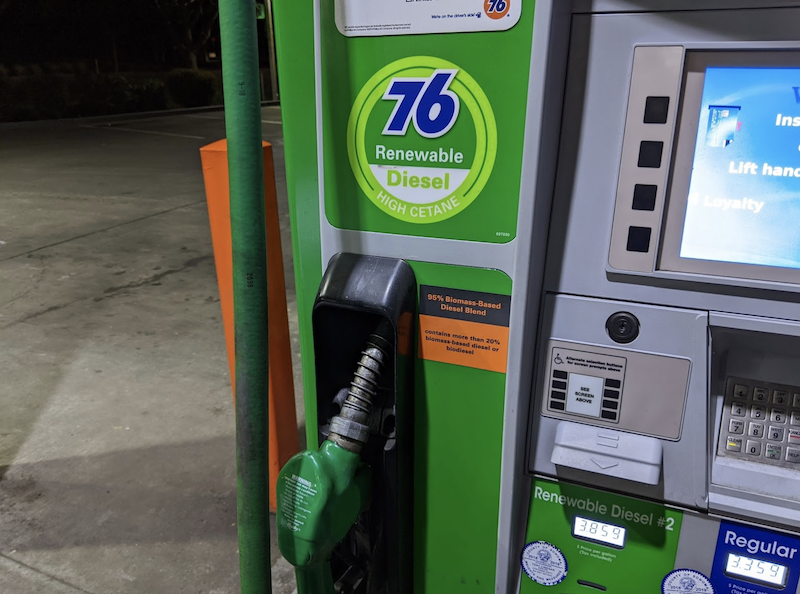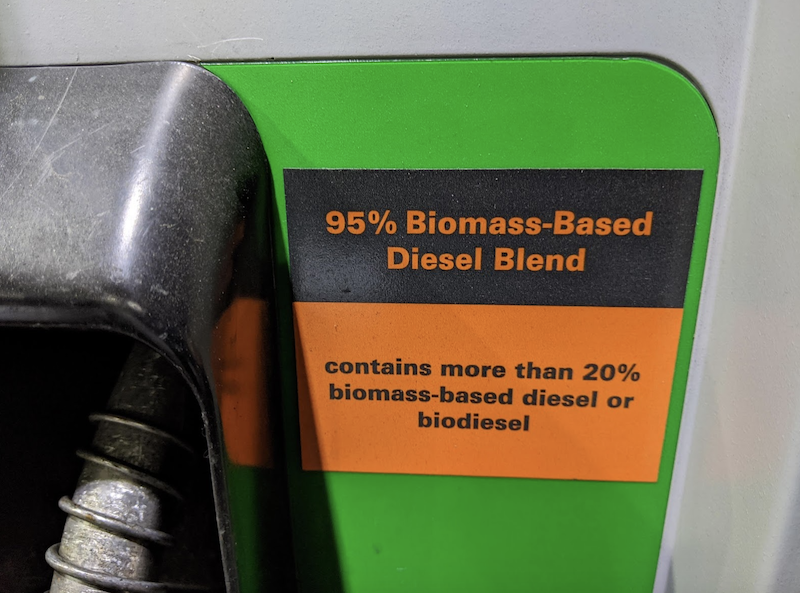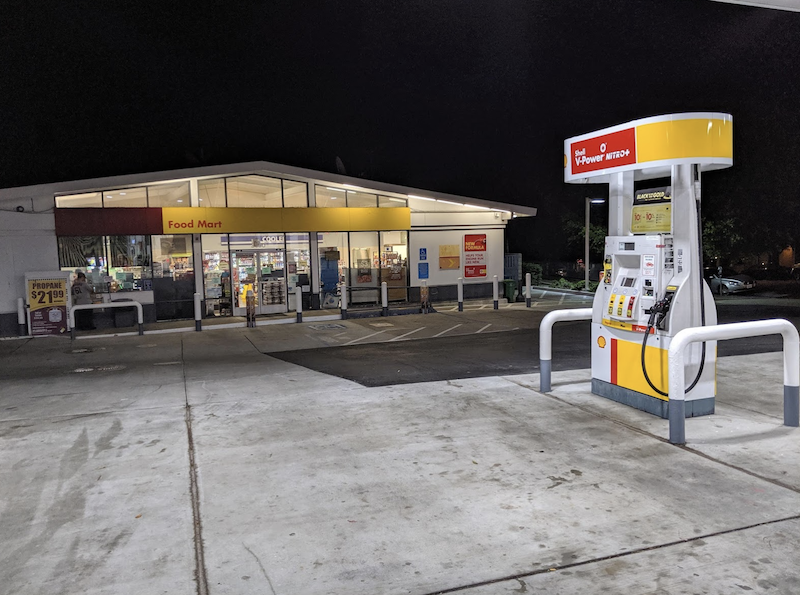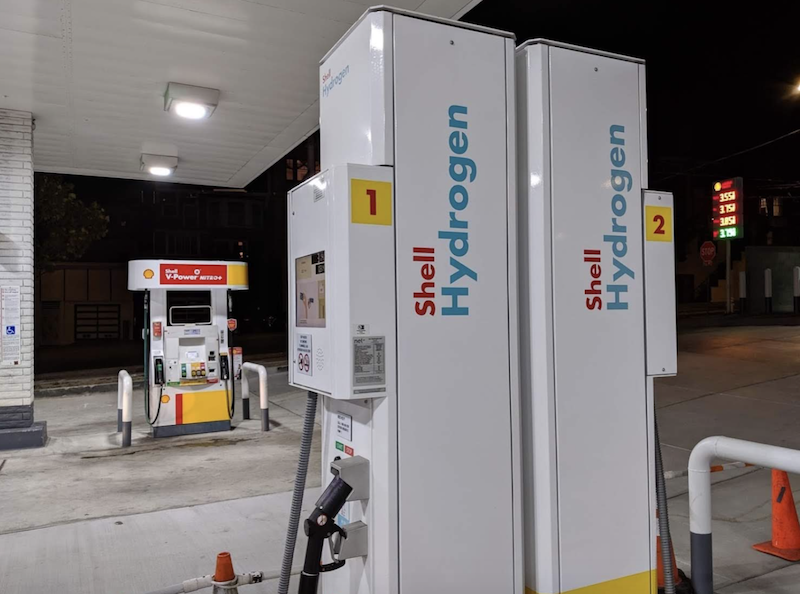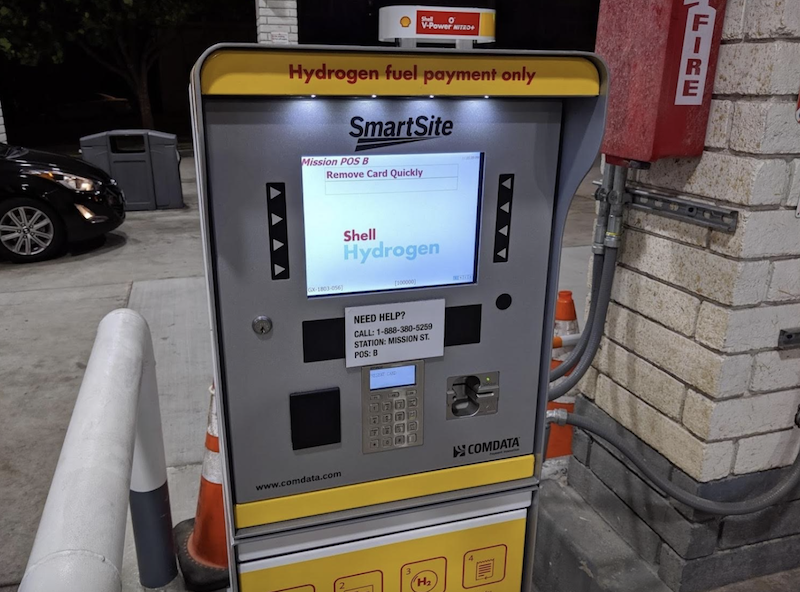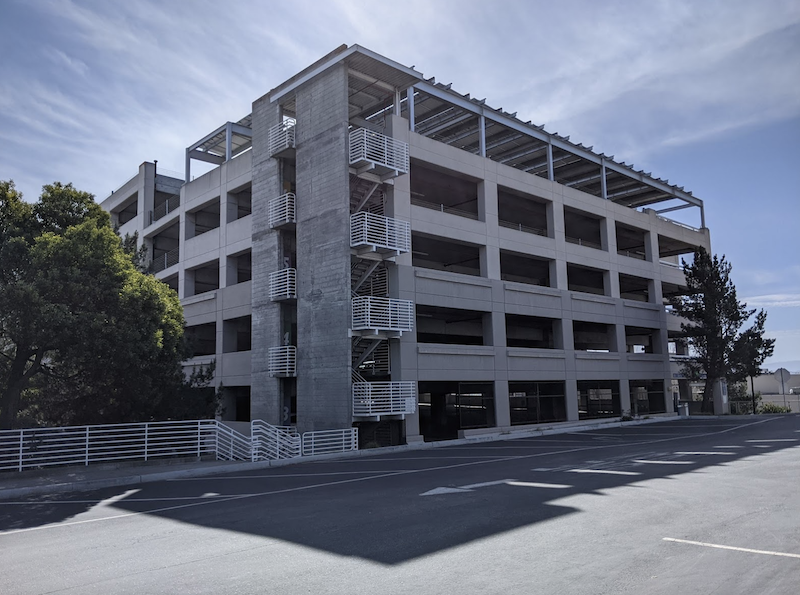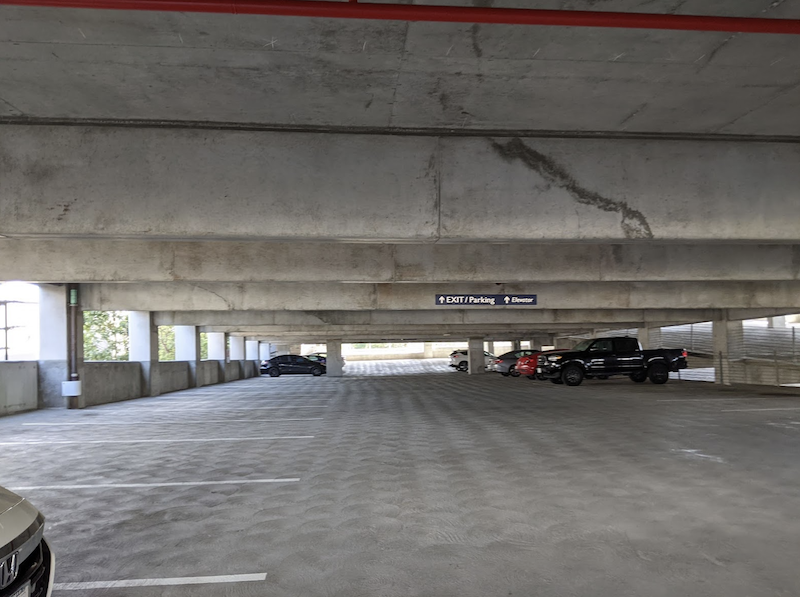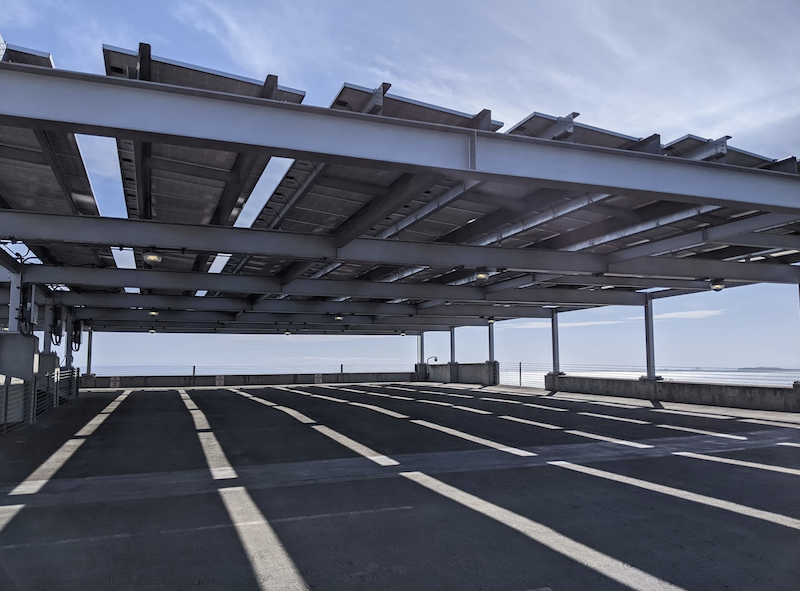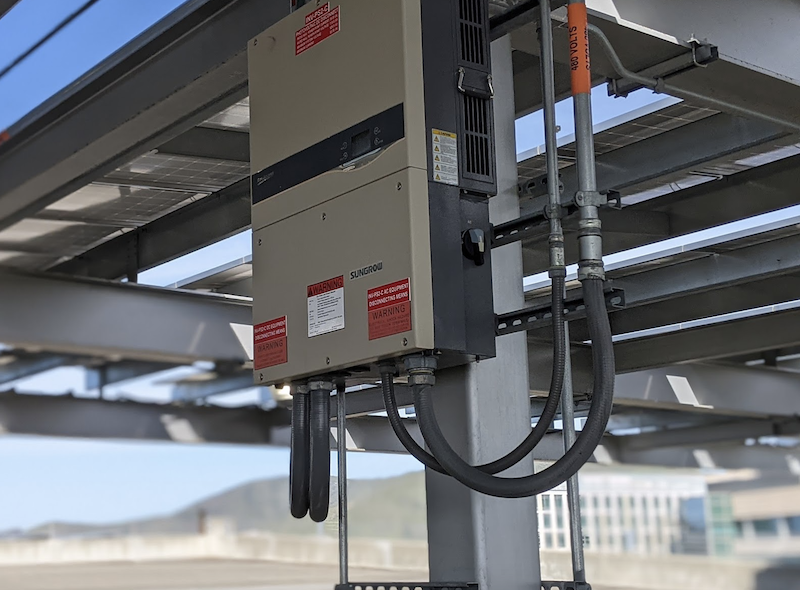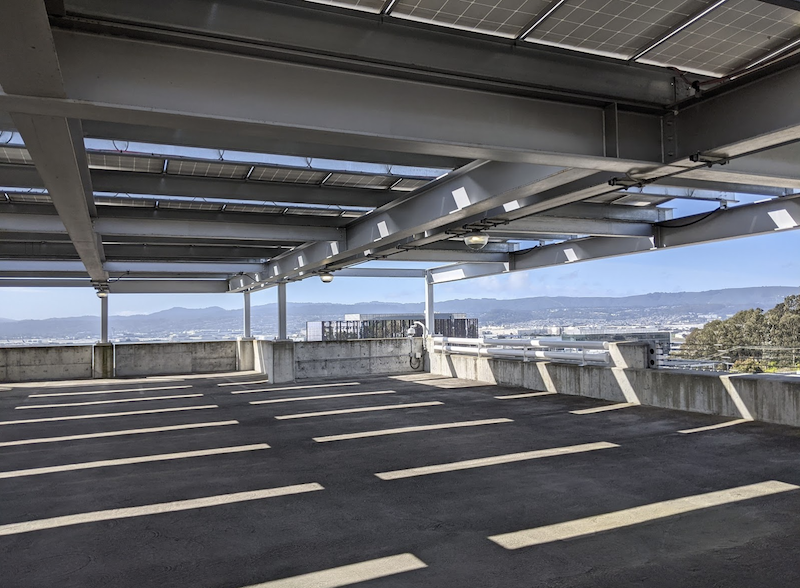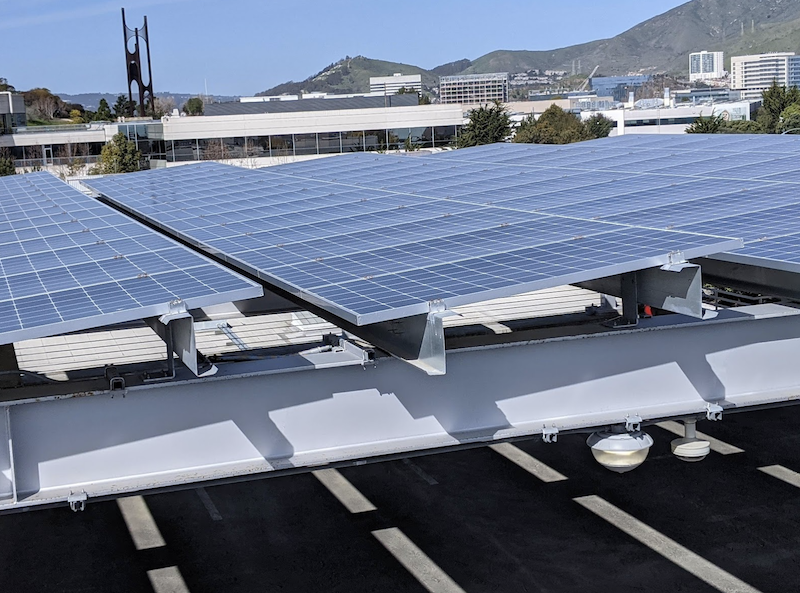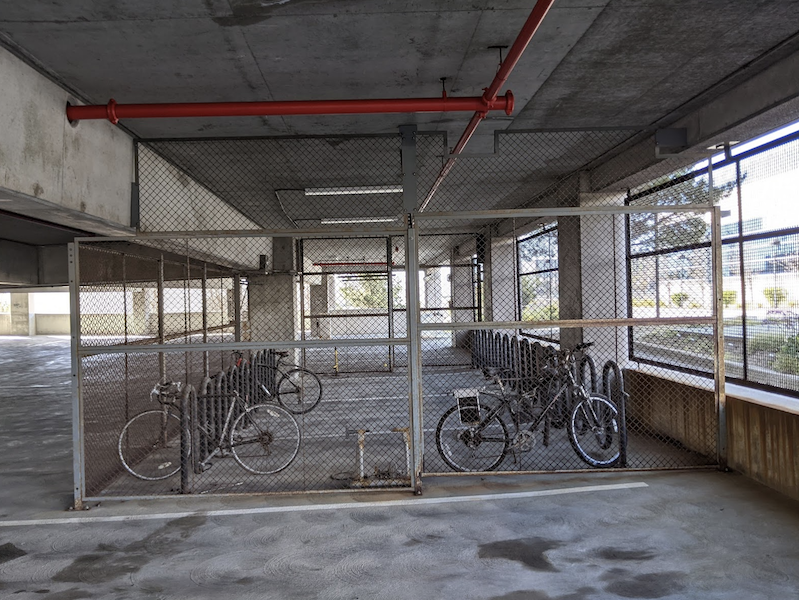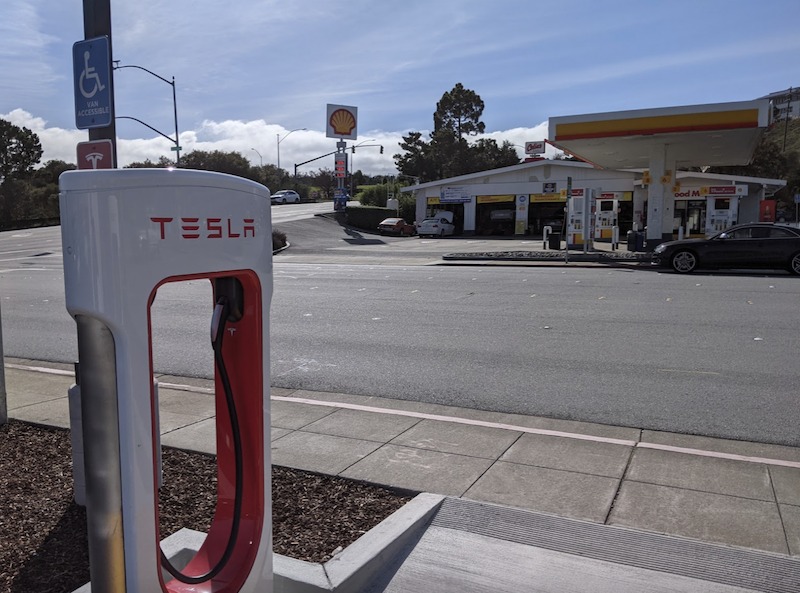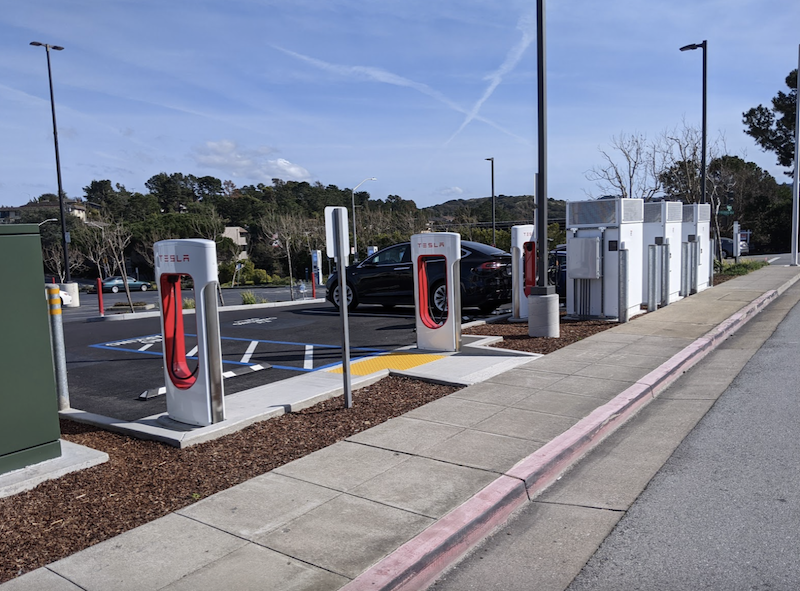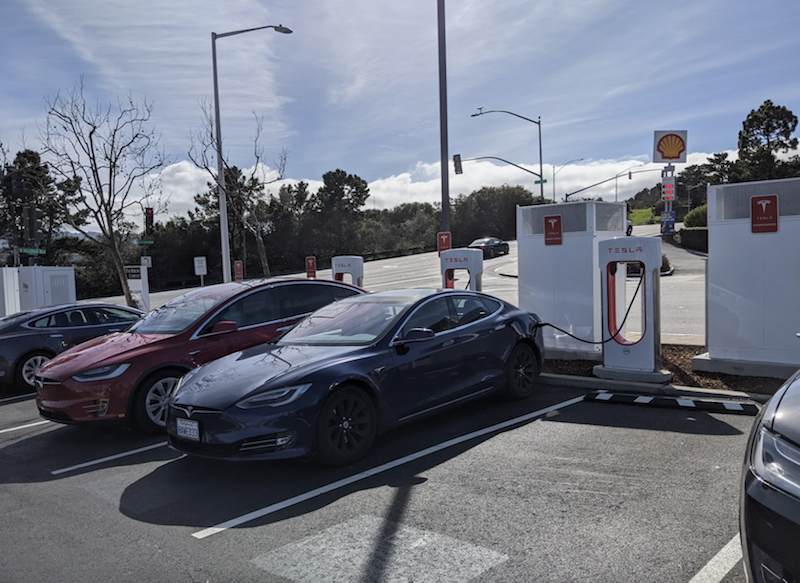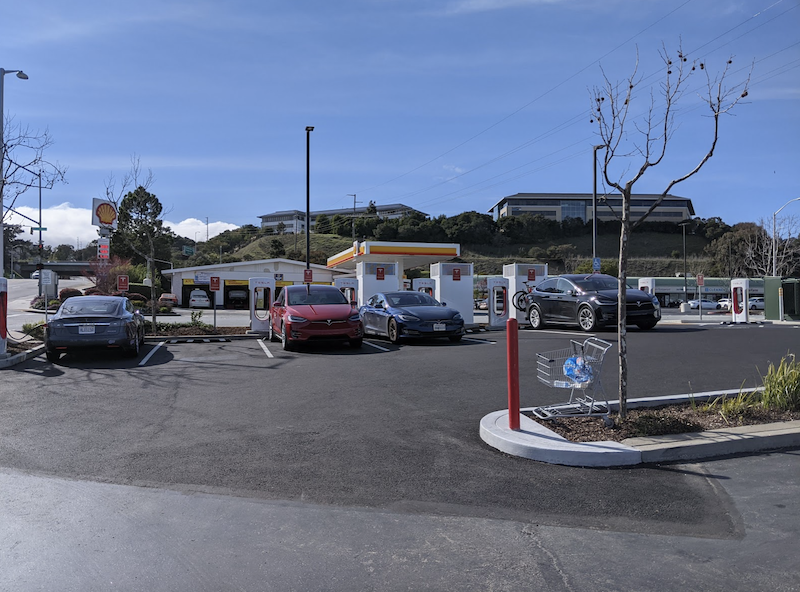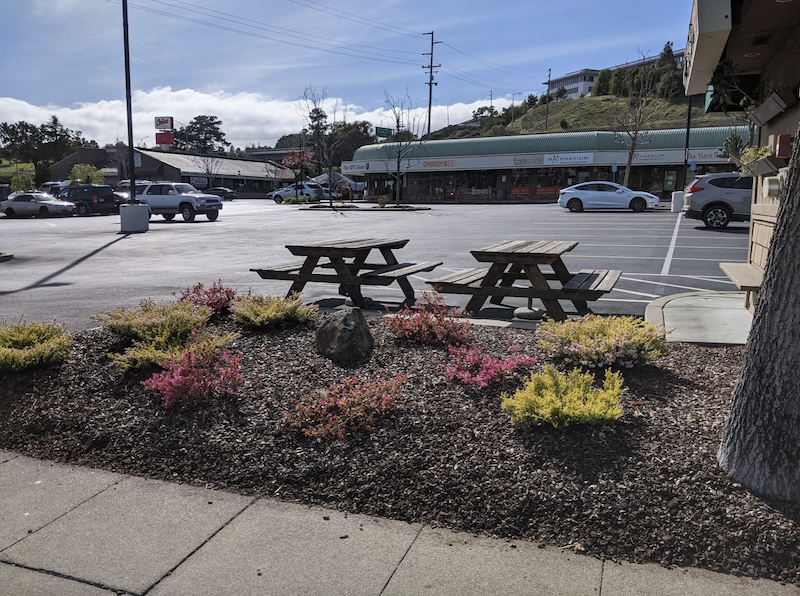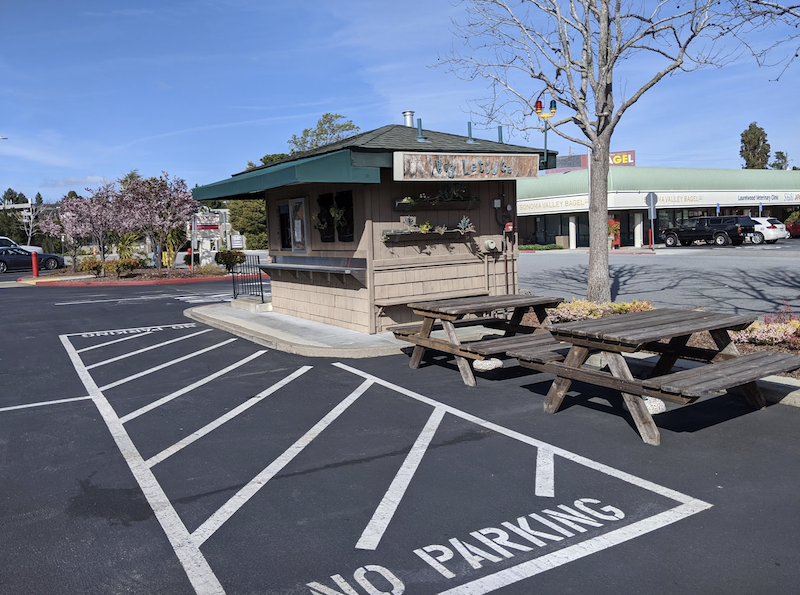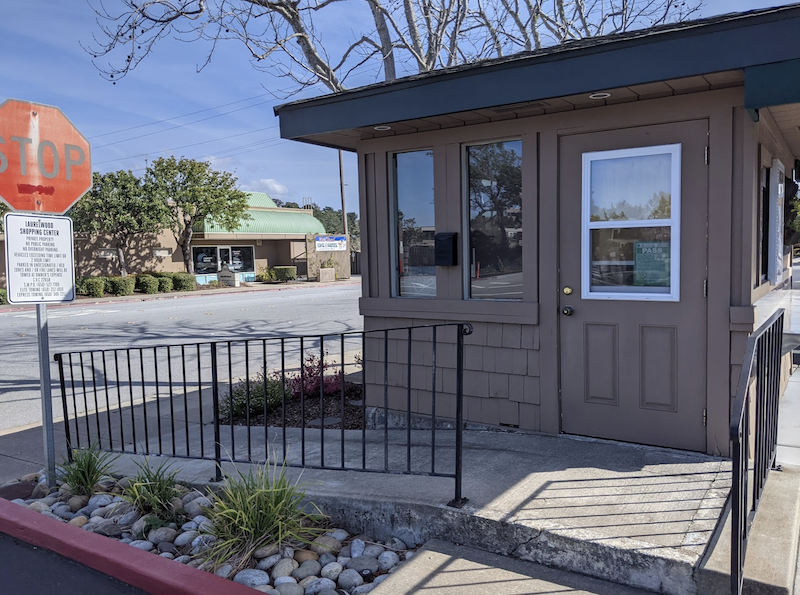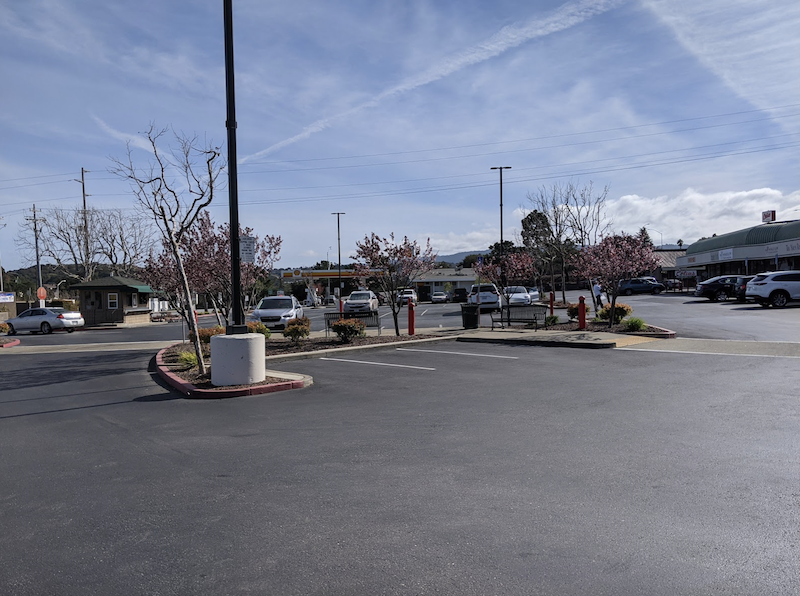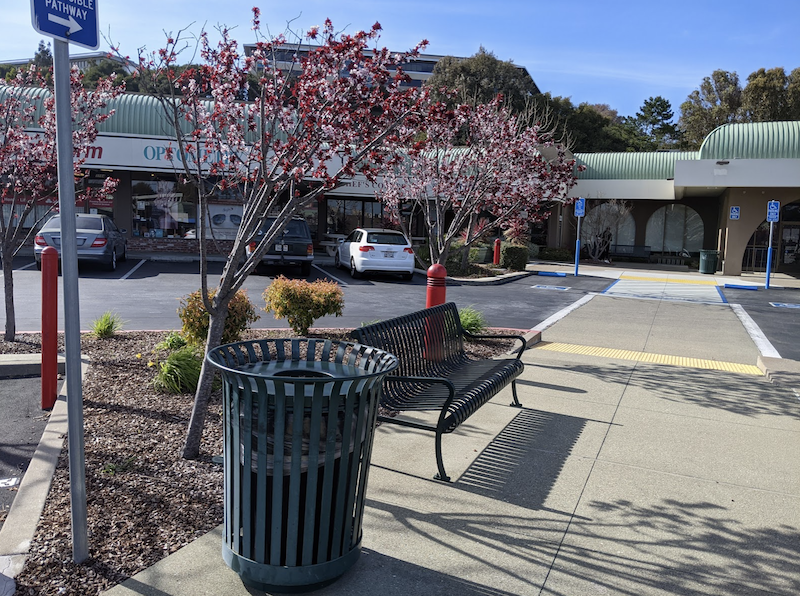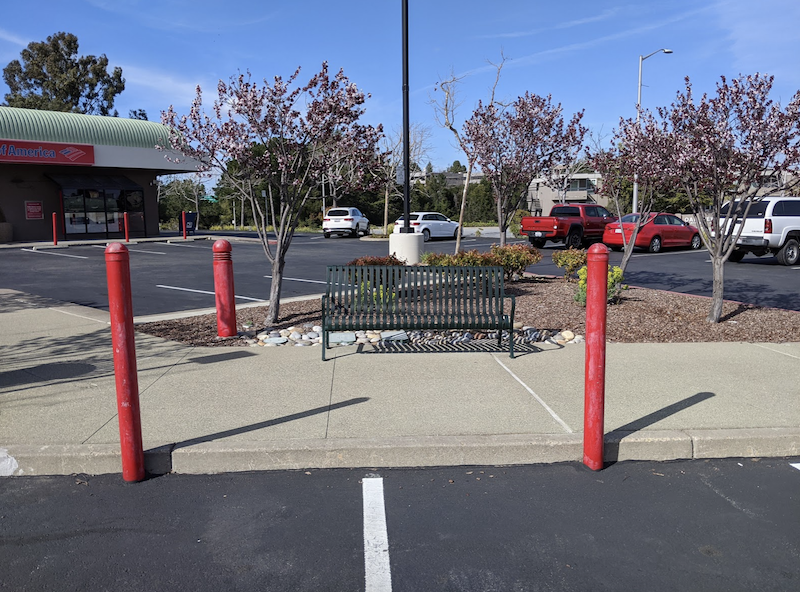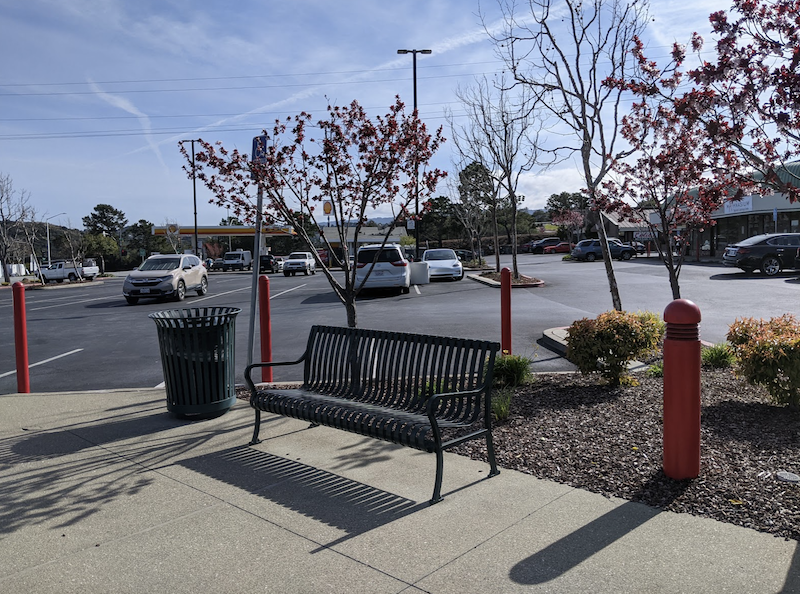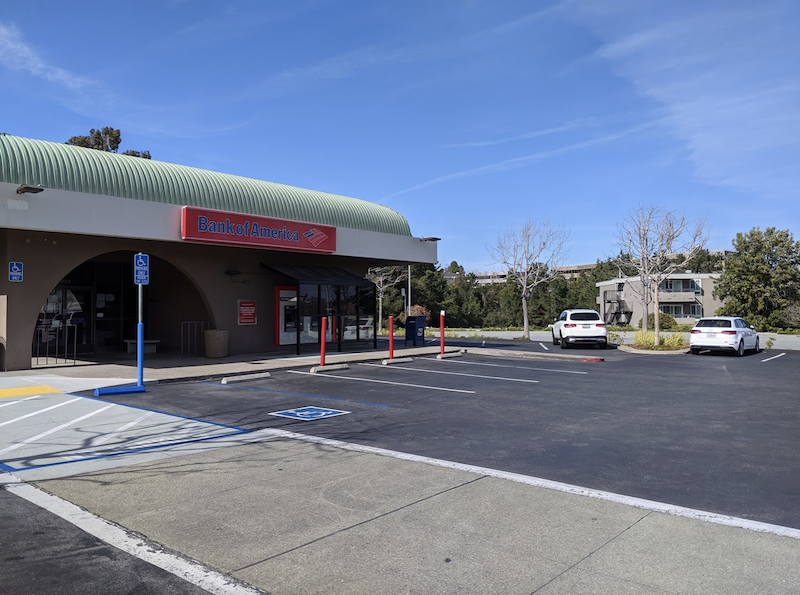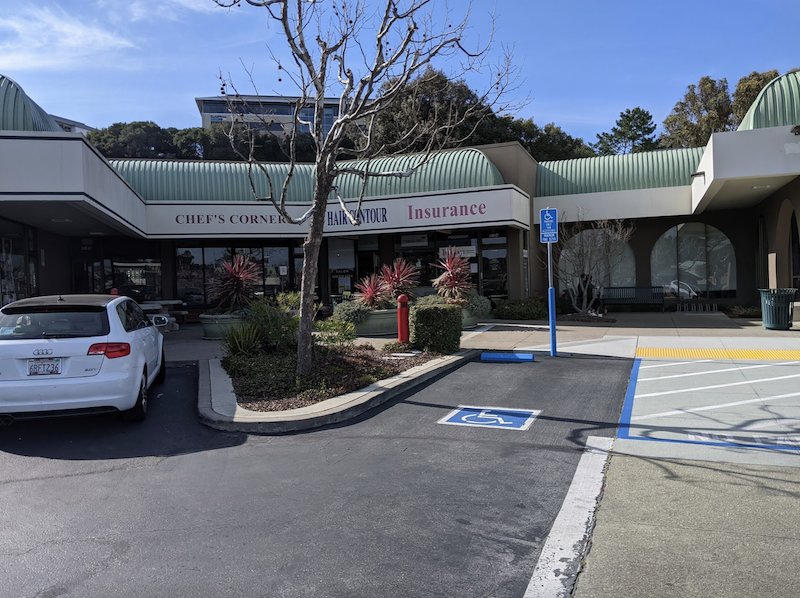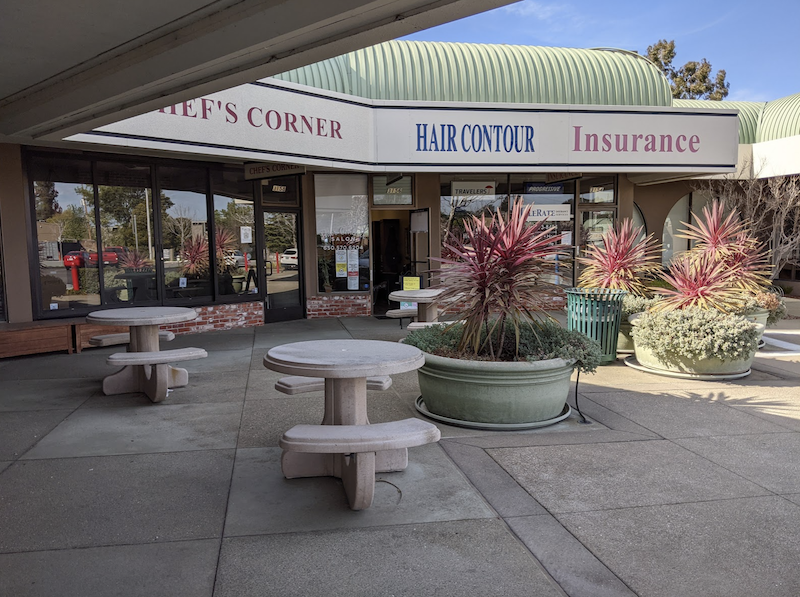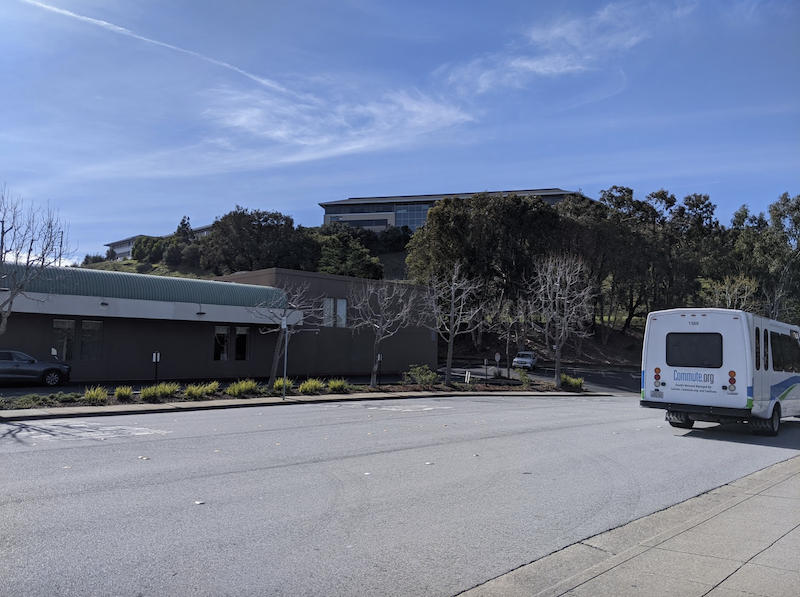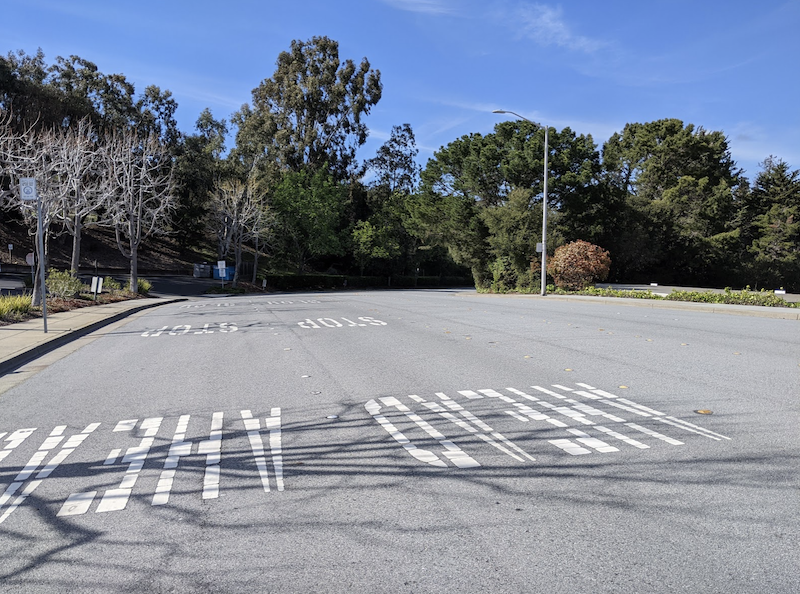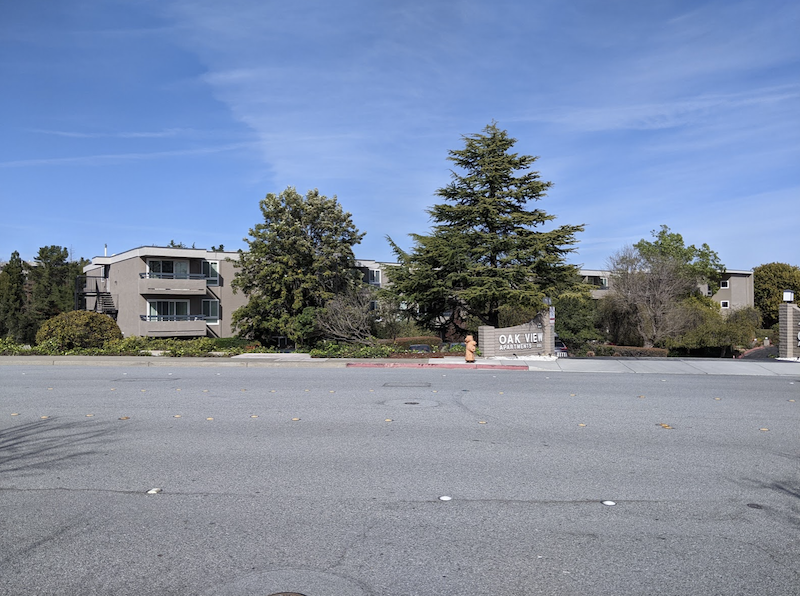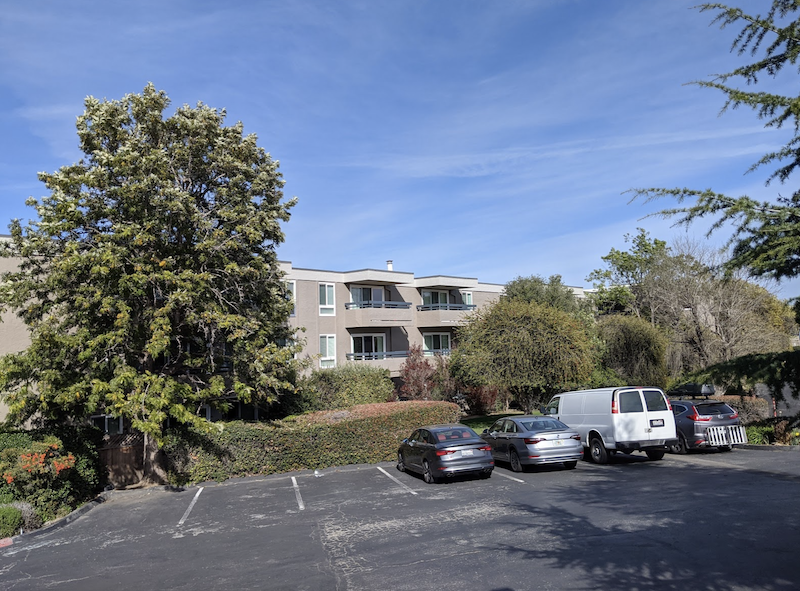The Edwards Go Electric
Many of you will be familiar with the work of Edward Hopper. His paintings depict the American landscape of the early 20th century in a frank and unsentimental manner. Instead of casting everything in a heroic or idealized light he embraced the quality of the world that actually existed. A sense of isolation and emptiness is a common theme for Hopper. He was sometimes commissioned to create propaganda posters such as “Smash the Hun” and “With the Refugees” that boiled complex issues down to simplistic imagery.
Source
Edward Ruscha’s long and continuing art career reaches back to the 1950s and has some similarities to Hopper’s work. Ruscha puts a special emphasis on bold graphic design and highly stylized imagery of generic commercial spaces. He published a book of photographs from California to his native Oklahoma in 1963 called “Twentysix Gasoline Stations.” He famously edited out all the images that were considered too interesting. He wanted as stark a scene as possible in order to find the bare essence of a place. In 1966 he published "Every Building on the Sunset Strip." His goal was to document the world as it was in order to see it more clearly.
I often find myself out in the world looking at scenes of life that imitating art, that imitate life, that imitate art… The bright colors and bold contrasts of truck stops and late night roadside convenience stores bring Hopper and Ruscha’s work into sharp focus.
We’ve entered the era of the mass market electric car. Tesla in particular has created a network of branded charging stations complete with exclusive membership lounges accessible by private code. Instead of fast food there’s a coffee bar and cubicle furnishings that look as though they were lifted directly from an office supply warehouse in Cupertino.
The lounge is also a merchandising opportunity for Tesla’s other product lines. Highway bathroom breaks are punctuated by conversations about solar roof tiles and home battery options. Notice how the overall aesthetic reeks of Hopper and Ruscha.
Out of curiosity I got on the Google to see what had previously occupied this Tesla charging station site. It was a dead Burger King that had been vacant for well over a decade based on date stamped street view images. There wasn’t actually anything wrong with the old building that couldn’t be fixed with a quick skin job as the new lounge demonstrates.
The old Burger King is still there under the bright red synthetic stucco. But such establishments are disposable by design. Once they’re amortized, depreciated, and the appropriate tax benefits have been extracted they’re abandoned. Then a new Burger King or Taco Bell or Applebee’s or McDonald’s is built at the next highway exit. In due course, they too will all be left for dead as part of the great abstracted and financialized Circle of Life.
There are currently a number of competing vehicle fuels jostling for slices of the transportation infrastructure pie. Electric batteries, hydrogen fuel cells, and ethanol are the primary side hustles elbowing in on petroleum. They all have their strengths and weaknesses.
I’ve come to the conclusion that we humans are going to dig up and burn every last sour crumb of anything we can possibly get our hands on. But there are diminishing returns to all these options and sooner or later the unpleasantness will set in. There is no perfect anything. Everything has costs and consequences. Nothing lasts forever.
People love their cars. Americans in particular can’t imagine life without them. And they’re right because we’ve built a continent size country where life is miserable on foot. The problem with vehicles isn’t necessarily the kinds of fuel they use, but the land use pattern they induce. And like it or not we’re stuck with it all for the duration.
We do what we do because we can, at least for the time being. Eventually we’ll stop because external reality won’t leave us any choice. But that’s a long way off and it will sneak up on us in baby steps.
This five story parking deck is a great example of the way we’ve organized transportation infrastructure. We build these giant things solely to store vehicles while we aren’t busy driving them. The solar panels on top may be there to charge electric cars, or maybe just feed the grid in general. I’m not opposed to any of this. But I have to ask how long it will take those panels to produce as much power as was consumed creating all that steel and concrete.
If we chose to not burn coal and oil we probably couldn’t mine, refine, and transport all the bulk materials we need to construct these kinds of parking decks, let alone the cars or the solar panels. I’m merely pointing out the cognitive dissonance. This arrangement is like ordering a triple bacon cheeseburger and then getting a Diet Coke to cut back on calories.
Notice the provision for bicycle storage. Spot the difference? I’m not suggesting that everyone should ride a bike to this particular destination. Honestly, that’s pretty close to physically impossible given the way we’ve organized the landscape into distant isolated pods. Instead, I’m saying electric cars won’t change the nature of the current landscape.
We could change everything about how society is organized and get pretty close to a solar and wind energy based economy. But that society wouldn’t look anything like the one we have now. A world truly powered by alternative energy might be better. It might be worse. But we aren’t interested in having that conversation. Let’s not pretend otherwise. We like our Diet Coke compromise too much.
Out in suburbia more modest charging stations sans executive lounge are popping up in plain vanilla parking lots across from legacy gas stations. Underground fuel tanks are being swapped for above ground electrical transformers.
This reminds me of old homes where vestigial appliances can be found, witness to the transition from wood stove, to oil burner, to natural gas heater, to electric heat pump. The homes themselves didn’t change much as the mechanical systems were exchanged. So too with this strip mall, office park, and garden apartment wonderland.
There’s an insistence that every inch of the built environment have ample free parking, be handicap accessible, ready to receive the world’s largest fire engine in case of emergency, and be embellished with drought tolerant native plantings.
Park benches and trash receptacles were generously included in both the design and budget of this parking lot. A smooth uninterrupted well lit path exists between every parking space and every shop door. It’s all right there in the municipal code handed down from engineers who solved all these problems generations ago.
There’s nothing wrong with these places when people experience them as a series of discrete entities. The inside of a car, the inside of a shop or office, the interior of a home or apartment - it’s all fine. The stuff in between is irrelevant.
But it’s all ultimately disposable like the dead Burger King. None of this is worth caring about beyond a certain point. It’s easier for people to move on to the next series of segregated and detached experiences than linger in a place that’s past its shelf life. This is a slow enough process that we don’t notice the gradual slide.
And take away the car (or the financing and global supply chains that make the car possible) for any reason and these environments become oppressive. You absolutely don’t want to attempt to get from Point A to Point B around here without a vehicle. Because then the in-between stuff starts to matter and it’s soul crushing.
This is the ubiquitous North American habitat. Some version of this is where most of the population currently lives. The transition to alternative fuels, to the extent it actually happens at scale, may be good or bad for all sorts of reasons. But as far as the overall built environment is concerned it’s just more of the same. And for most people that’s just as well, because any alternative would be unfamiliar and frightening. Hopper and Ruscha saw the future and it looks a lot like the past.
